- Home
- Robin Cook
Pandemic Page 3
Pandemic Read online
Page 3
“I don’t see that much except on the ear,” Lou said, trying to be optimistic.
“There is a bit on the ear and also some on the neck,” Jack said, pointing. “Obviously the full head of hair absorbed most of it.”
“I don’t think I’m going to like where you’re going with all this,” Lou said. The victim was the wife of one of Lou’s detective colleagues who also worked out of the NYPD’s Homicide Division.
Jack nodded. There was no doubt that Lou had become quite forensically knowledgeable over the years of their friendship. “There’s more. Let’s use a wooden dowel to align this entrance wound above the right ear with the exit wound below the left mandible.”
Vinnie handed Jack the wooden rod he had leaned against the autopsy table. Grasping it at both ends, Jack held it so that it rested on the crown of the patient’s head but lined up with the two wounds.
Lou reluctantly agreed. “I’m getting the picture: The pathway of the bullet is definitely downward.”
“I’m sorry to be the bearer of bad news,” Jack offered, hearing the disappointment in his friend’s voice. “Unfortunately, what we see here is not a contact wound. My guess at this point would be that the gun barrel had to have been about two feet away and maybe as much as thirty inches. And the trajectory was definitely oriented caudally. Are you aware of the statistics about this?”
“Not exactly,” Lou said. “But I know it’s not what I was hoping. Jesus, I’ve known this guy for more than twenty years. I’ve even had dinner in their home out in Queens a dozen times, especially after I got divorced. They had their problems, like all couples. But hell! They have two grown kids.”
“Ninety percent or more of small-arms suicides are contact wounds, meaning the barrel of the gun is up against the skull when discharged. In only about five percent of suicides is the bullet path downward, and an even smaller percentage where it’s directed from the back to the front, both of which we see here.”
“So you don’t think this was a suicide?” Lou asked, almost plaintively.
Jack shook his head.
“Can we get on with this freakin’ autopsy,” Vinnie complained.
Jack flashed a dirty look at his favorite mortuary tech. Vinnie ignored it. “I’m having caffeine withdrawal.”
“Was there a suicide note?” Jack asked, returning his attention to Lou.
“Clutched in her left hand,” Lou said with a nod. “One of Walter’s service automatics was in her right hand. She was lying on their bed on her back. It was a mess.”
“And he had called you?” Jack said.
“Yeah,” Lou said. “We’d been together most of the evening after being called out on that first autopsy we did. Walter found her dead when he got home, or so he said. I was the one who put in the nine-one-one call as I was leaving my apartment on my way over to see him. I got there before anyone else, and the man was beside himself. It was godawful. Not that I haven’t seen worse.”
“Well, we’ll have to see how it plays out,” Jack said. “Maybe there was a third party involved. But I certainly will not be signing this out as a suicide. I’m definitely thinking homicide. But let’s do the autopsy and go from there.”
“Hallelujah,” Vinnie said, making a rapid sign of the cross in the air in appreciation.
“Let’s not be blasphemous,” Jack chided sardonically.
“You should talk,” Vinnie scoffed. More than anyone at the OCME, Vinnie knew just how irreverent Jack Stapleton could be. Jack was not a religious man after his first wife and two young daughters had been killed in a commuter plane crash. He couldn’t imagine a Christian God would let such a terrible thing happen.
The postmortem went quickly. Other than a number of uterine fibroids, the woman’s general health had been excellent and there was no pathology. The part of the autopsy that took the longest came after Vinnie had shown Carlos how to remove the skull cap. With appropriate exposure, Jack had carefully followed the bullet’s transit through the brain, where it had wreaked complete havoc. While Jack was busy, Vinnie exposed the underside of the skull cap to photograph the beveled edges of the inner aspect of the entrance wound.
When Jack’s third autopsy was complete, he left Vinnie and Carlos to clean up and return the cadaver to the walk-in cooler. Although Lou usually departed as soon as the main part of the autopsy was over, on this occasion he stayed until the bitter end. Jack sensed he was reluctant to head back to his lonely apartment in SoHo. The implication was that he needed to talk more about the disturbing autopsy results, even though he was plainly exhausted from having been up all night.
After changing out of their autopsy gear, Jack took Lou up to the so-called lunchroom on the second floor, which wasn’t much with its blue-painted concrete-block walls, cheap molded-plastic furniture, and handful of vending machines. For a modern medical examiner’s office with a staff of highly trained, world-class forensic pathologists, it was pathetic. But there was a light at the end of the tunnel. A brand-new high-rise NYC medical examiner’s building had been constructed on 26th Street, four blocks south of the sad, existing six-story structure that had been built almost a century ago at 30th Street and First Avenue. Most of the Manhattan office’s hundreds of employees had already moved to the palatial new location. Those who had yet to go were the toxicologists and the entire bevy of MEs. The problem was that the new building did not have an autopsy room. A new state-of-the-art autopsy facility was still in the planning stages, to be built as a separate structure next to the new high-rise. Until it was operational, Jack and his colleagues had to remain in the old, outdated structure.
“Knowing the choices, what can I get you?” Jack asked. He regarded his friend of almost twenty years. As his name clearly suggested, Lou was distinctly southern Italian, with thick, reasonably long, mostly dark hair and equally dark eyes and decidedly olive skin. A handsome, heavy-featured man of medium height and musculature, with a girth that suggested too much pasta and not enough exercise. As usual, he was wearing a dark blue suit that didn’t appear to have been pressed in the previous year. His rumpled white dress shirt was open at the collar and his gravy-stained silk tie was loosened and appeared never to have been untied, but rather slipped over the head at the end of each and every day.
The comparison with Jack was stark, especially when the two were standing right next to each other as they were now. Jack’s hair was a light brown, cut moderately short, with a blush of gray over his temples. His eyes were the color of maple syrup and his complexion suggested he had a slight tan even when he hadn’t been in the sun for months. At six feet two inches tall, with an athletic build from bike riding and street basketball, he seemed to tower over Lou, whose habit was to hunch over as if his head were far too heavy.
“I don’t know,” Lou admitted. He was having trouble making up his mind.
“How about a water,” Jack suggested. He knew the last thing Lou needed was more coffee. What he really needed was sleep.
“Yeah, water’s fine,” Lou said.
Jack got two waters and sat down across from Lou.
“You’ll let me know what toxicology shows on the second case,” Lou said.
“Absolutely,” Jack said. “As soon as I know.” All three cases that Lou had come in to watch that morning involved the NYC Police Department. The one Lou was currently referring to was a “death in custody” case. During the autopsy Jack had been able to show Lou that the prisoner’s hyoid bone had been fractured, which was a clear demonstration that a lethal choke hold had been used. It had happened during an arrest. The question now was whether the force was justified or whether it was excessive. The neighborhood where it had happened was up in arms and wanted answers.
Lou was also awaiting final word on the first case he had watched Jack handle that morning. It, too, was an arrest that had gone bad, resulting in a shootout with the victim holed up in his car, where he was hit four
times. Several bystanders claimed that the victim had yelled “enough” and had stopped firing, yet still the police shot him. Once again it was a potential PR nightmare for the police department, and a tragedy if it proved to be true. To get answers, Jack had painstakingly tracked all four bullets in the man’s body and now wanted to re-create the scene in the special laboratory in the new high-rise building to figure out exactly what had happened and when.
“It’s been an interesting morning,” Jack said. “I’m especially sorry that I couldn’t be more help for your buddy. Probably the case is going to turn on the suicide note and whether it’s authentic. Divorce isn’t fun, but it is a lot better than homicide, if that’s what the case turns out to be.”
“Enough about me and my problems,” Lou said with a wave of dismissal. “What’s up at the Stapleton-Montgomery household these days? I haven’t talked to you or Laur for ages.” Lou had met Laurie Montgomery, Jack’s wife, before Jack had been hired by the NYC OCME. Lou and Laurie had even briefly dated until they both sensed it wasn’t to be and became fast friends instead. When Jack came on the scene, Lou had been his advocate. Laur had been the name one of Lou’s daughters had used when she’d first met Laurie, and, thinking it cute, Lou had adopted it as well.
“Please,” Jack said. “Let’s not go there.”
“Uh-oh.” Lou leaned forward over the table. “Knowing you as I do, I don’t like the sound of this. What’s up?”
“I don’t know if I want to get into it,” Jack told him.
“If you don’t talk to me, who are you going to talk to?” Lou arched a brow. “I love both you guys.”
Jack nodded. Lou was right. He was the only person Jack could talk to about what was going on. The question was whether he wanted to talk at all. Ever since the plane crash that annihilated his first family more than twenty-five years ago, Jack had more difficulty than the typical male in talking about emotional issues. When problems arose, he much preferred to work harder and play harder, which meant more hours at the OCME and more hours playing evening basketball. But even he knew such a strategy had the major drawback of not contributing to a possible solution. It was like sweeping dust under a rug or sticking your head in the sand.
“Whatever it is, it has to get solved,” Lou said. “Listen. You and Laurie are my last holdout for belief in the possibility of marital bliss, especially with this new possible homicide disaster with my buddy Walter. One of the reasons I haven’t been in touch with you two over the last month or so is that I have met a new woman, and I’m actually toying with the idea of tying the knot once again.”
“Congratulations, my friend.” Jack’s tone didn’t hold a lot of enthusiasm.
“I hear the reservation in your voice,” Lou said. “Come on! Talk to me. Does it have something to do with Laur’s becoming the chief here at the OCME?”
Two months ago, Dr. Harold Bingham, the chief medical examiner, had passed away following a heart attack, and an ad hoc NYC search committee had recommended that Dr. Laurie Montgomery take over the reins. The offer had surprised both Jack and Laurie, but particularly Jack, especially after Laurie had accepted. Jack had always hated what he called the bureaucratic bull crap that was a necessary adjunct to being a medical examiner, having little patience for kowtowing to powers-that-be in any form or fashion. It had taken years for the OCME to establish a degree of political independence, particularly from the police or the people who controlled the police, so as to become an unbiased voice for the dead. The importance of such independence was obvious from the three autopsies Jack had done that very morning. All too often in the distant past, the mayor or the police commissioner would tell the medical examiner what he was to find on his autopsies. Jack prided himself on his ability not to let the opinions of others influence him. But with his wife as chief and the line between his personal and professional lives suddenly blurring, his hard-won impartiality had taken on a whole new complication.
“I can tell you this,” Jack said. “I was shocked when she took the job. Between you and me, she’s not having all that much fun. Not only is she now beholden to some degree to her bosses, meaning the mayor and the Commissioner of Health, she rarely gets to do what she does and likes best—namely, forensic pathology. Those two politicos have her running ragged just to maintain funding. She doesn’t like confrontation, nor is she good at it, thanks to her autocratic cardiac surgeon father, who tortured her when she was a teenager.”
“So is she bringing home her frustrations and taking them out on you?” Lou asked.
“Well, you know Laurie. Whenever she does something, she does it one hundred and ten percent. She’s the boss now both here and at home.”
“I’m sorry to hear it,” Lou said. “Have you tried to talk with her about it all?”
Suddenly Jack put down his water with such force on the table that Lou started, spilling some of his own. Jack then threw up his hands and shook his head in disbelief. “I don’t believe myself,” he admitted. “I don’t know why I’m even saying all this.”
“I think it’s pretty obvious,” Lou said. “It’s bothering the hell out of you. I can tell.”
“No, it’s not,” Jack snapped. “Oh, it’s bothering me some, especially when Laurie has been trying to dictate how much basketball I should be playing or telling me I shouldn’t be riding my new Trek road bike to and from work. But her bringing her CEO problems home isn’t the issue that’s driving me up the wall. Laurie is a big girl, and I’m a big boy. It’s Emma who’s turned me into a basket case.”
“Oh, no,” Lou said. “What’s with Emma?” It had been a while since he’d seen Jack and Laurie’s daughter, who’d just turned three.
“Two weeks ago our pediatrician tentatively diagnosed her with autism.”
“Good God,” Lou said.
“We’ve known something has not been right, but we didn’t want to hear it was autism. She’d been doing fine with her babbling and relating to us and JJ but then started going backward.”
“I hate to admit to my ignorance, but I’m not all that sure what autism is. I’ve heard about it, but I don’t know anyone whose kids have it.”
“You’re not alone,” Jack said. “It’s mysterious. It can cause difficulties for the kid in terms of social interaction and communication. It’s not even a specific diagnosis, as far as I’m concerned. It’s a spectrum thing, with some kids seriously afflicted and others not so much. Even the so-called experts have no idea of the specific underlying pathology.”
“What causes it?”
“There again, nobody really knows.” Jack shook his head. “They talk about environmental factors, genes, and epigenetic factors. It could be some mysterious combination of all three.”
“What the hell are ‘epigenetic factors’? You doctors love to make us normal people feel like idiots.”
“Sorry,” Jack said. “Epigenetic factors refer to inheritable characteristics that don’t depend on the DNA sequence of a gene.”
“Sorry I asked,” Lou said. “Is there any treatment for autism?”
“Not really. There’s a range of behavioral interventions and special-education programs that have some promise but not a lot of evidence-based results. The uncertainty of it all is what’s driving me bananas.”
“How is Laur taking it?”
“In some ways she’s doing better than I, in that she’s taken it on as an intellectual challenge, willing to read everything and anything as the way to deal with it. I’m the opposite. I get almost immediately fed up with the vagueness and wordiness of it all and want to rail against the gods. It’s my surgical personality. But the downside for Laurie is her feeling of guilt. She keeps beating herself up about not having taken a maternity leave sooner, thinking that all the weird chemicals we’re exposed to around here could have played a role.”
“Has that been proven to cause it?”
“No, of course n
ot,” Jack said.
“Then she shouldn’t blame herself,” Lou pointed out.
“Yeah, well, you tell her that,” Jack said. “I’ve been saying the same thing until I’m blue in the face. Besides, I have my own struggles with guilt.”
“How can it be your fault?”
“I’m a total jinx on kids,” Jack said. “You know my daughters from my first marriage were killed in a plane crash, but did you know they were on the plane to begin with because they were on the way back from visiting me when I was training in Chicago? And look at JJ. The poor kid had neuroblastoma as a baby. I wouldn’t want to be my kid.”
“I never thought of you as superstitious,” Lou said.
“I didn’t, either,” Jack said. “But it’s hard to argue with the facts.”
“Talking about JJ, how is he doing?”
“Terrific,” Jack said. “He’s the bright light in all this.”
“How old is he now?”
“Eight and a half,” Jack said. “He’s in the third grade. No sign of a recurrence of his tumor, and you should see him dribble a basketball. The kid’s a natural.”
“Does he get along with Emma?”
“He does. He has the patience of a saint despite Emma’s retrogression. I wish Laurie’s mother, Dorothy, was half as cooperative and understanding.”
“What’s with Laur’s mother? Is she making things worse?”
“Inestimably worse. If it weren’t for her having invited herself to move in during this trying time, I might not be such a wreck. And it’s not just me. She’s driving our live-in nanny just as crazy. You remember Caitlin O’Connell, don’t you? We were lucky to find her after JJ’s kidnapping.”
“That, I’ll never forget. Seems like yesterday.”
“Well, she confided in me that she’s thinking of moving out if Dorothy stays. I’ve tried to talk to Laurie about it, but Laurie has always had trouble dealing with her parents, her father especially, but her mother, too.”

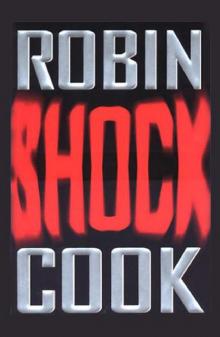 Shock
Shock Mutation
Mutation Chromosome 6
Chromosome 6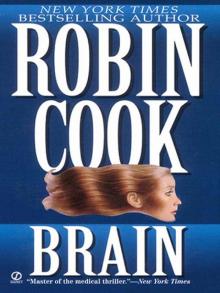 Brain
Brain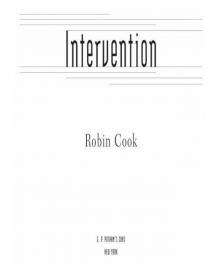 Intervention
Intervention Invasion
Invasion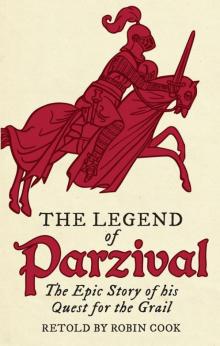 The Legend of Parzival: The Epic Story of His Quest for the Grail
The Legend of Parzival: The Epic Story of His Quest for the Grail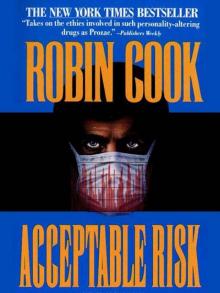 Acceptable Risk
Acceptable Risk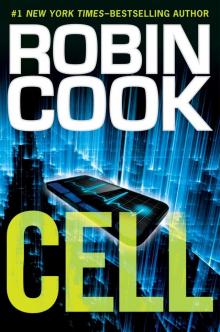 Cell
Cell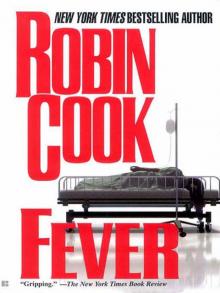 Fever
Fever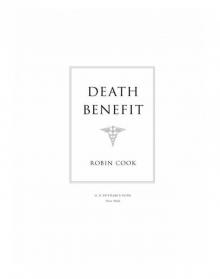 Death Benefit
Death Benefit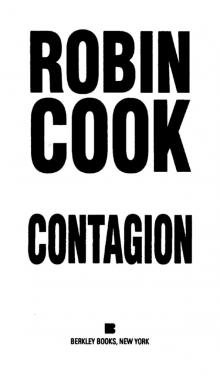 Contagion
Contagion Mindbend
Mindbend Coma
Coma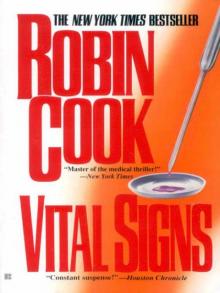 Vital Signs
Vital Signs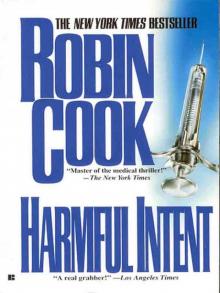 Harmful Intent
Harmful Intent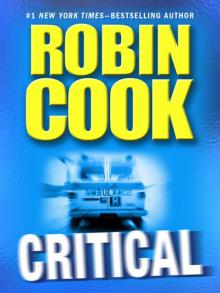 Critical
Critical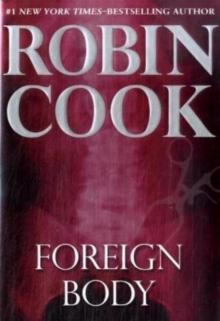 Foreign Body
Foreign Body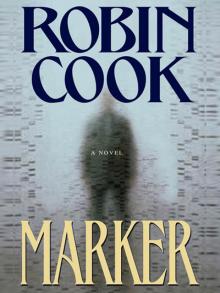 Marker
Marker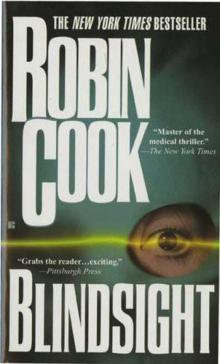 Blindsight
Blindsight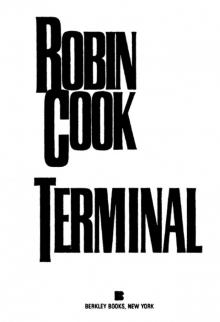 Terminal
Terminal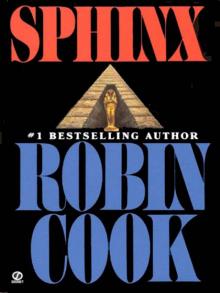 Sphinx
Sphinx Fatal Cure
Fatal Cure Host
Host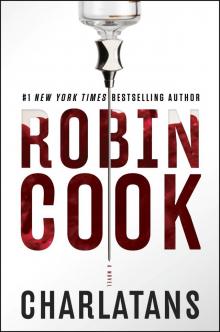 Charlatans
Charlatans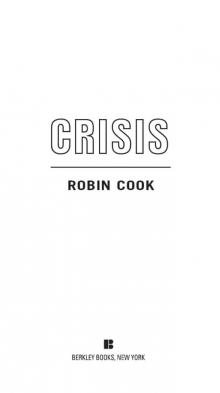 Crisis
Crisis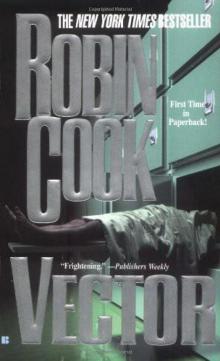 Vector
Vector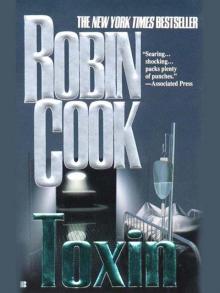 Toxin
Toxin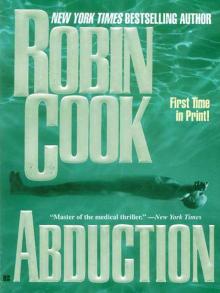 Abduction
Abduction Viral
Viral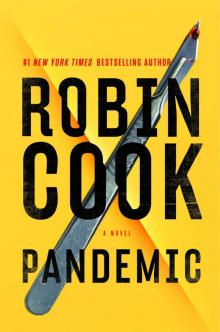 Pandemic
Pandemic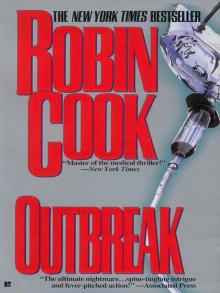 Outbreak
Outbreak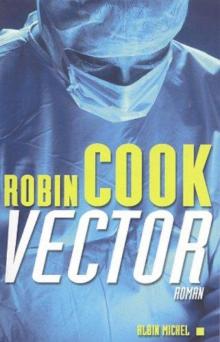 Vector js&lm-4
Vector js&lm-4 Godplayer
Godplayer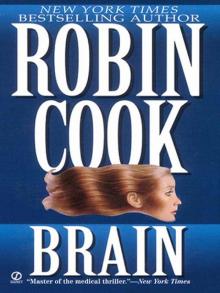 A Brain
A Brain Year of the Intern
Year of the Intern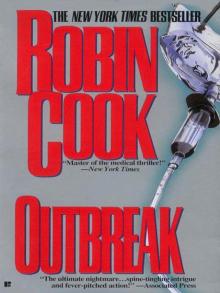 Outbreak dmb-1
Outbreak dmb-1 Cure
Cure Mortal Fear
Mortal Fear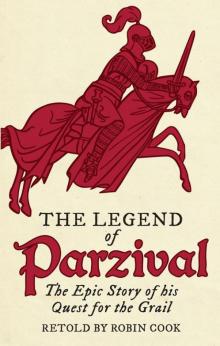 The Legend of Parzival
The Legend of Parzival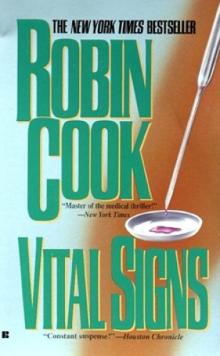 Vital Signs dmb-2
Vital Signs dmb-2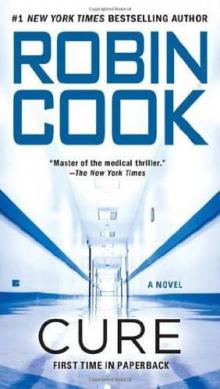 Cure (2010) sam-10
Cure (2010) sam-10 Blindsight sam-1
Blindsight sam-1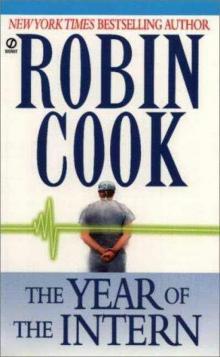 The Year of the Intern
The Year of the Intern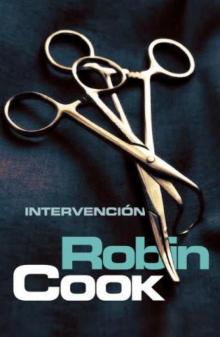 Intervention sam-9
Intervention sam-9 Foreign Body sam-8
Foreign Body sam-8